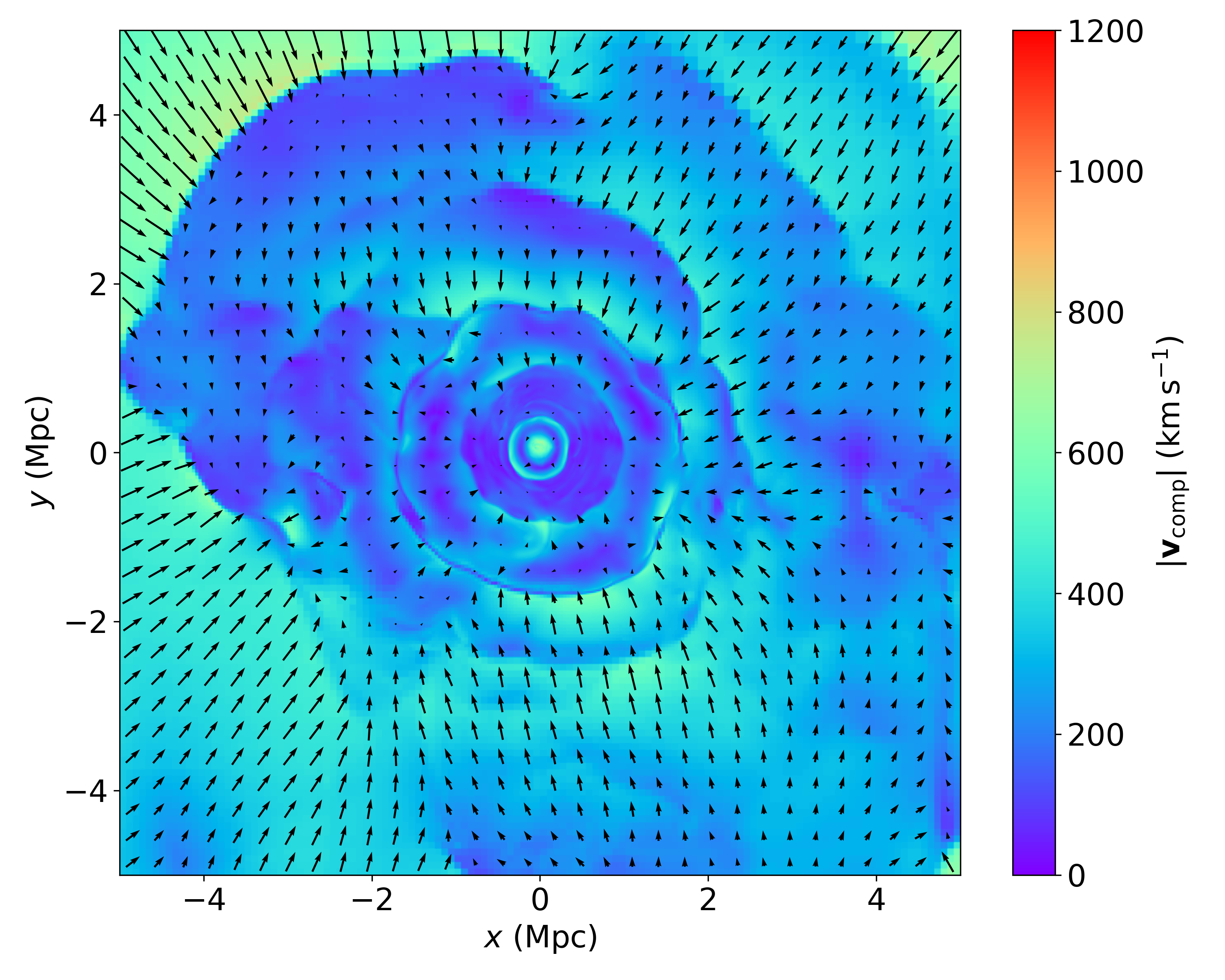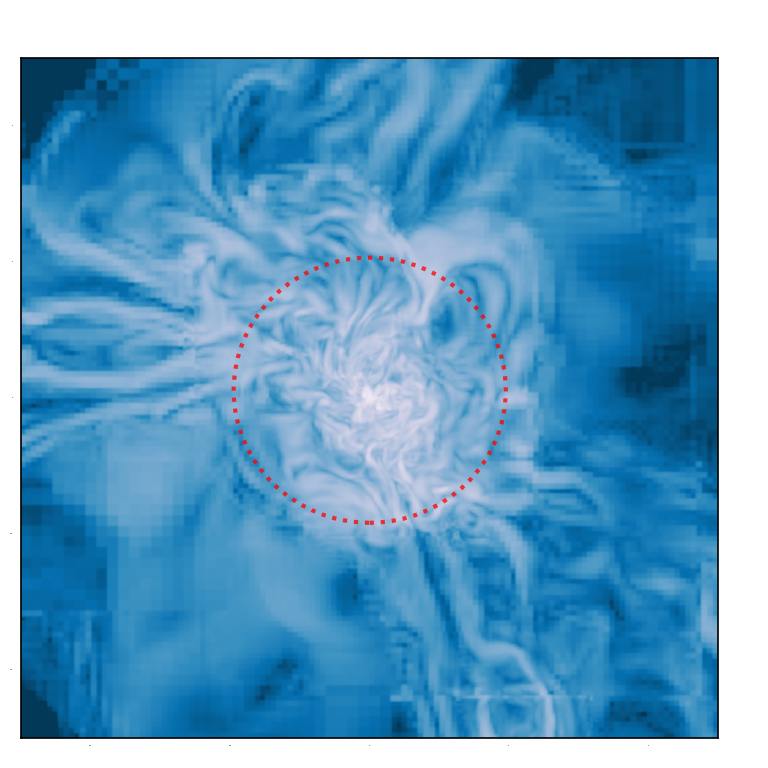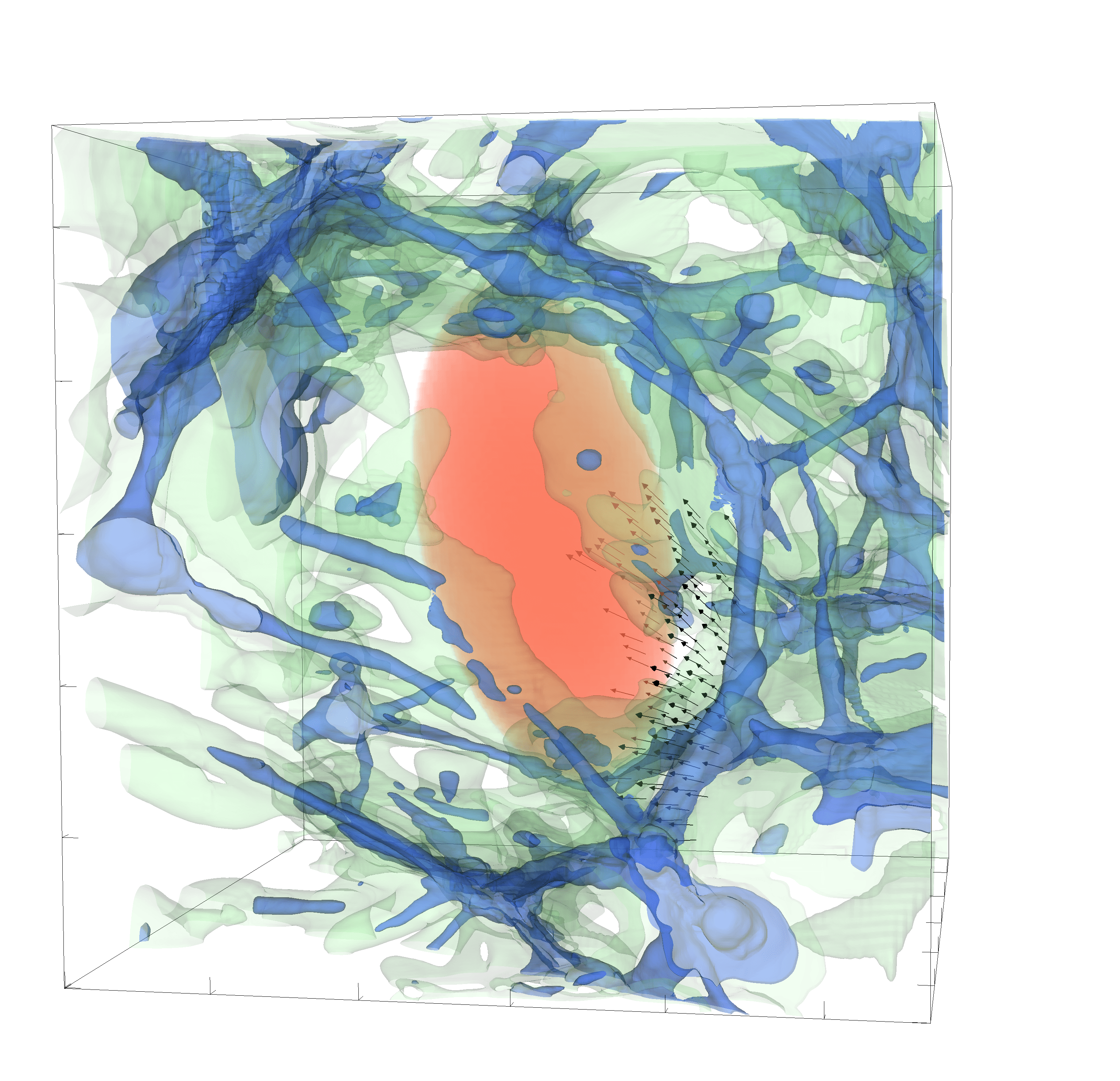On the accretion history of galaxy clusters: temporal and spatial distribution
David Vallés-Pérez, Susana Planelles & Vicent Quilis. December 2020.
doi:10.1093/mnras/staa3035In this work, we explored the accretion history of a small sample of galaxy clusters from a numerical simulation, aiming to examine different proxies for the accretion rate (including Γ200m computed from the full merger tree of haloes, α200m computed from the velocity profile, and the integrated mass flux through the virial boundary), as well as the impact of accretion on the internal properties of the cluster. Finally, the spatial distribution of mass accretion flows is estimated using a pseudo-Lagrangian approach on the Eulerian gas data of the simulation, and studied through multipolar analysis, revealing significant angular dependences in some thermodynamic properties such as the entropy of the accreted gas.













